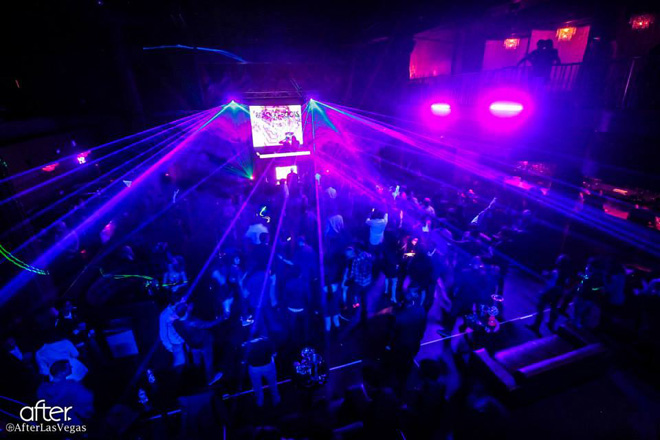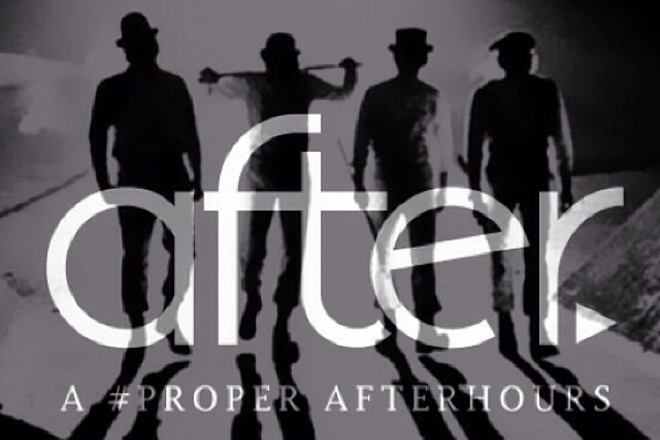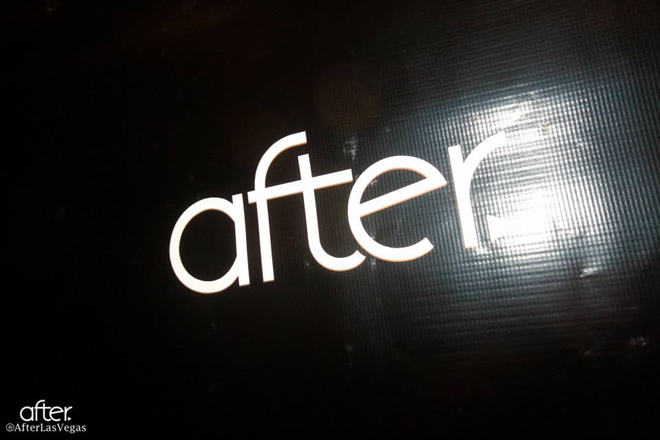Arguing over whether top EDM producers are true DJs has become a cliché at this point; at large scale events slanted toward “mainstream” audiences, producers and their labels expect exposure, festival promoters want money-making performers, and audience members respond better to familiarity.
Still this overall amalgamation has spread across top-tier clubs to the point that it’s expected that the biggest talent comes on, plays just for a couple of hours, focuses at least a third of his material on the hits, and then leaves. At Pacha Ibiza, it has been enough of a problem that club owners canceled contracts with top DJs. At NYC’s biggest EDM nightclubs and venues, like Marquee, Pier 94, and Pacha NYC, this format is fairly standard, with the exception of the “warm up” act. And aside from some older top DJs in Las Vegas, you can expect this format at Hakkasan, XS, and other clubs of that ilk.
For Las Vegas, what has gotten attention this past month was a picture posted from AFTER Las Vegas, a new club that opened in February. The picture featured the club’s list of rules for afterhours performers, which can be seen here.
Performers during this block must avoid trap and dubstep completely – and considering afterhours sets typically have had a more “chill,” laidback vibe to them, this makes sense. But then come the restrictions on pop and progressive house, nixing tracks from everyone from Avicii to Wolfgang Gartner.
From here, the technology comes into play. While AFTER doesn’t specify its performers have to use vinyl, the list states: “Do not play a pre-mixed set on 1 channel in Ableton” and “Do not play on Traktor without the use of external controllers.” Mic use, unless for singing, is forbidden, as are requests. Anyone not following these rules gets asked to leave and will not be paid.
Although this list seems unnecessarily mean at points (is it really appropriate to call one-hit wonder producer prodigy Martin Garrix a “douche”?), the overall issue and Pacha Ibiza’s supposed shift to underground talent hint that not every top-tier EDM venue is going to put up with predictability and laziness, from tracklists to actual DJing skills.
1. Give the audience something original
 It’s no secret that, when you go to any festival or event with several mainstream EDM producers, you end up with the same songs across multiple sets, with mixes that really don’t sound entirely different. It’s one aspect bogging down large events with multiple performers on the bill, as well as an issue for shows with just five or fewer DJs. The latter makes it particularly glaring, as four or five DJs sharing a bill could’ve at least compared their setlists beforehand.
It’s no secret that, when you go to any festival or event with several mainstream EDM producers, you end up with the same songs across multiple sets, with mixes that really don’t sound entirely different. It’s one aspect bogging down large events with multiple performers on the bill, as well as an issue for shows with just five or fewer DJs. The latter makes it particularly glaring, as four or five DJs sharing a bill could’ve at least compared their setlists beforehand.
Still, it’s not simply just repeat tracks – it’s the fact that almost all top DJs pull their mixes and setlists from the Beatport top 10, where at several points during the year, you’ve got at least an Avicii, Calvin Harris, David Guetta, Swedish House Mafia member, or Deadmau5 track included.
That’s not to say the quality of the music is bad, and amongst this group, targeting Bob Sinclair, Chuckie, and Wolfgang Gartner, who’s spoken before about starting underground, seems like AFTER just wants to purge the setlists of familiarity, no matter the performer.
It was less than 10 years ago (actually, make that more like six years) that you could still hear a DJ and not be able to pick out 60 percent of the music added to the set; part of the experience of listening and seeing a DJ was wondering what he’ll do next. These days, a transition including the noticeable vocals or synth line from a Swedish House Mafia track added to a setlist means you know what’s sort of in store for the next two to three minutes.

2. No more hitting the spacebar
Deadmau5’s blog post in 2012 stirred up a heck of a lot of ire in the electronic dance music community, particularly amongst mainstream performers, that hasn’t really died down. Although certain older top-tier talent has the vinyl background, the favoring of laptops over turntables means it seems like not a lot is going up on stage. Add identical setlists into the mix (even older performers with actual vinyl experience are guilty of this), and a club tour or residency simply looks like a DJ put together one group of tracks, hits play night after night, and just pumps his fist from behind the booth to get the crowd interested.
Professionals are taking note of this. Eric Prydz, for instance, emphasized that he varies the tracks he selects night after night in Las Vegas, while Tim Sheridan stated to Mixmag in so many words that EDM is killing the art of DJing, from the sync function and laptop usage to the emphasis on spectacle over track selection.
Along this line, controversy erupted in 2012 when the BBC claimed Calvin Harris endorsed pre-recorded sets with the following quote: “I think it’s not a problem. In the club you want to hear a produced piece of music, you want to hear the bass, you want to hear it as good as it can sound … I used to perform with a band putting all sorts of work into a live show and I can tell you that the reaction was worse than it is when I’m DJing.”
While Harris threatened to sue, especially as the quote isn’t clear regarding pre-recorded sets and may simply be his perspective on performing live versus DJing, his remark does indicate one hurdle that clubs like AFTER will have to overcome when reverting back to more traditional DJing: High-paying audiences don’t appear to like experimentation. Considering AFTER just started in a highly-competitive market, we’ll have to see how well this strategy works – or if they’ll start falling back on pre-recorded sets of the hits.
3. Get Well Known, DJ Later
Although the use of technology and gear continues to be an issue for the typical DJ, as you can see here and here, how electronic music gets to the mainstream post-2010 has cut the club out of the picture, so that producers don’t always have to be DJs.
This occurrence, no doubt, has changed how sets get performed at major festivals and EDM events, but what this and ultimately AFTER’s and Pacha Ibiza’s similar moves show is the performer has to be a name first before going up behind the booth.
To one lesser extreme, this means producers like Avicii, Skrillex, and Martin Garrix make a hit before they get the large-scale DJing gigs. To one, far more egregious end, you’ve got Paris Hilton being a DJ, without having ever had a proper EDM hit. It seems that simply being “hot” and hitching herself to a middling mainstream performer are the only qualifications Hilton needs to land gigs.
She claims she’s one of the highest paid DJs in the world. But just as playing herself in The Hottie and The Nottie doesn’t mean she’s an actress, being paid to stand there and look cute behind a laptop doesn’t mean she’s a DJ – just a fancy piece of eye candy doing a club appearance.
Between seeming star power to getting DJ gigs to regular predictability and pre-recorded sets, something needs to be done to pull the art of DJing back out to the mainstream. AFTER’s success and Pacha Ibiza’s changes may be a start, but it’s just the first of several steps forward.





